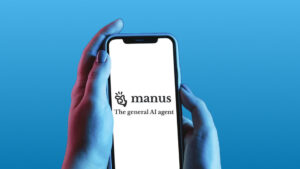Ghibli, AI, and the Rise of a Semantic Era: Exploring AI Partnerships, China’s Strategy, Nuclear Innovations, Hacking Enzymes, and Intergalactic Travel

A Week of Rapid Developments in AI
OpenAI and Image Models
Hello, I’m Azeem, and it’s been an eventful week in the world of artificial intelligence. OpenAI’s latest image generation model has created quite a stir, causing their servers to become overloaded. Meanwhile, Google has made headlines with its Gemini 2.5 Pro model, which shows an impressive 40-point improvement in performance within the Chatbot Arena.
The Rise of Ghibli-Style Art
Recently, social media has been awash with images styled after the beloved works of Studio Ghibli, thanks to OpenAI’s new image model. From personal photographs to memes, users have been sharing Ghibli-inspired recreations in large numbers. While this phenomenon has been entertaining, it raises significant questions about the implications of such widespread imitation.
Erik, an analyst, mentions a sense of "semantic satiation," where the joy derived from these Ghibli-styled images can lead to a feeling of emptiness. Ed Newton-Rex, an advocate for creators’ rights, labeled this trend as “the biggest art heist in history.” However, I believe that these recreations can actually lead to greater awareness of the unique artistry involved in original works, rather than replacing them.
Art and Authenticity in the Age of AI
Although encountering Ghibli-style portrayals may ignite curiosity, their lack of context risks reducing them to mere imitations. The real essence of art lies not just in its style, but in the narratives and emotional depth behind it. If style becomes a mere commodity produced by AI, human creativity will need to find ways to stand out.
To thrive, artists may focus more on what AI cannot replicate: original storytelling, personal insights drawn from real experiences, and transparency in the creative process. In a landscape filled with imitations, authenticity—genuine, verifiable human creativity—will hold immense value. As we navigate this evolving art world, we may come to appreciate works that foreground the artist’s journey and intentions.
Teaming Up with AI
Recent studies have shown that AI systems operate not merely as tools but as collaborators. For instance, a study by Fabrizio Dell’Acqua found that individuals working with AI could produce results at a speed comparable to two-person teams, with improvements of 12-17% in efficiency. Another study demonstrated that human-AI teams communicated 45% more than teams without AI, allowing humans to concentrate more on content generation instead of editing.
However, relying on AI as a partner requires trust in its capabilities. Google’s Gemini 2.5 Pro has emerged as an example of the advancements achieved in large language models. With its notable efficiency and user-friendly design, many users are finding it to be a valuable resource.
Innovations and Global Perspectives
While many view China through an outdated lens that emphasizes imitation, it has steadily evolved into a hub of innovation. Companies like BYD are flipping the narrative; for instance, BYD recently delayed plans to establish a factory in Mexico due to concerns about technology loss to competitors. The landscape of technological development is shifting, with new competitors challenging traditional views on intellectual property and innovation.
Understanding AI Mechanisms
In the field of AI, companies like Anthropic have released intriguing research delving into the inner workings of their models. Their investigations into AI behaviors can reveal both structured planning and random confabulation, leading to fascinating insights into how language models operate. Murray Shanahan emphasizes that while AI may mimic human thought processes, it lacks true consciousness. His recent work suggests that interactions within rich environments could prompt revisions in our understanding of AI’s cognitive capabilities.
Future Benchmarking in AI Progress
As we look ahead, the new ARC benchmark promises to be a critical area to monitor. Instead of merely measuring obscure knowledge, it focuses on fluid intelligence and adaptable responses. These factors set apart organic thought from the simple mimicry often observed in AI’s language models.
Learn More About AI Utility
This week’s developments underscore the evolving landscape of artificial intelligence—from image generation to understanding complex collaborations. Companies like Sana are making strides in helping businesses integrate AI into their workflow effortlessly, promising to simplify processes while enhancing productivity. Offering a myriad of features like task automation and meeting summaries, Sana is helping bridge the gap between human creativity and AI assistance.






